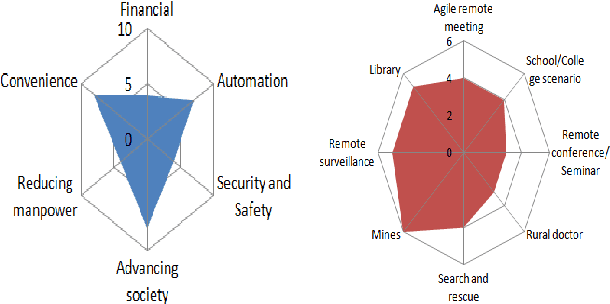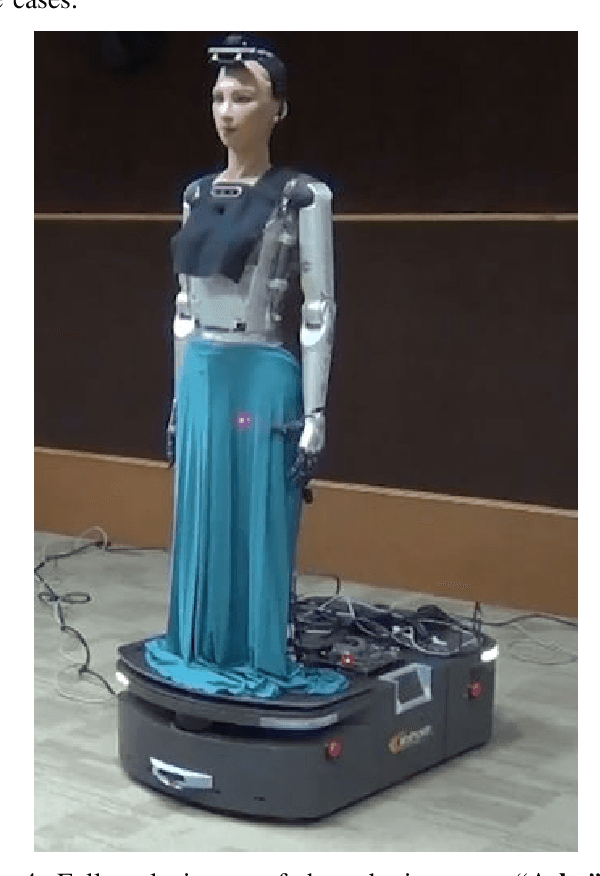Hrishav Bakul Barua
MD-BERT: Action Recognition in Dark Videos via Dynamic Multi-Stream Fusion and Temporal Modeling
Feb 06, 2025



Abstract:Action recognition in dark, low-light (under-exposed) or noisy videos is a challenging task due to visibility degradation, which can hinder critical spatiotemporal details. This paper proposes MD-BERT, a novel multi-stream approach that integrates complementary pre-processing techniques such as gamma correction and histogram equalization alongside raw dark frames to address these challenges. We introduce the Dynamic Feature Fusion (DFF) module, extending existing attentional fusion methods to a three-stream setting, thereby capturing fine-grained and global contextual information across different brightness and contrast enhancements. The fused spatiotemporal features are then processed by a BERT-based temporal model, which leverages its bidirectional self-attention to effectively capture long-range dependencies and contextual relationships across frames. Extensive experiments on the ARID V1.0 and ARID V1.5 dark video datasets show that MD-BERT outperforms existing methods, establishing a new state-of-the-art performance. Ablation studies further highlight the individual contributions of each input stream and the effectiveness of the proposed DFF and BERT modules. The official website of this work is available at: https://github.com/HrishavBakulBarua/DarkBERT
A Cycle Ride to HDR: Semantics Aware Self-Supervised Framework for Unpaired LDR-to-HDR Image Translation
Oct 19, 2024Abstract:Low Dynamic Range (LDR) to High Dynamic Range (HDR) image translation is an important computer vision problem. There is a significant amount of research utilizing both conventional non-learning methods and modern data-driven approaches, focusing on using both single-exposed and multi-exposed LDR for HDR image reconstruction. However, most current state-of-the-art methods require high-quality paired {LDR,HDR} datasets for model training. In addition, there is limited literature on using unpaired datasets for this task where the model learns a mapping between domains, i.e., LDR to HDR. To address limitations of current methods, such as the paired data constraint , as well as unwanted blurring and visual artifacts in the reconstructed HDR, we propose a method that uses a modified cycle-consistent adversarial architecture and utilizes unpaired {LDR,HDR} datasets for training. The method introduces novel generators to address visual artifact removal and an encoder and loss to address semantic consistency, another under-explored topic. The method achieves state-of-the-art results across several benchmark datasets and reconstructs high-quality HDR images.
ActNetFormer: Transformer-ResNet Hybrid Method for Semi-Supervised Action Recognition in Videos
Apr 09, 2024Abstract:Human action or activity recognition in videos is a fundamental task in computer vision with applications in surveillance and monitoring, self-driving cars, sports analytics, human-robot interaction and many more. Traditional supervised methods require large annotated datasets for training, which are expensive and time-consuming to acquire. This work proposes a novel approach using Cross-Architecture Pseudo-Labeling with contrastive learning for semi-supervised action recognition. Our framework leverages both labeled and unlabelled data to robustly learn action representations in videos, combining pseudo-labeling with contrastive learning for effective learning from both types of samples. We introduce a novel cross-architecture approach where 3D Convolutional Neural Networks (3D CNNs) and video transformers (VIT) are utilised to capture different aspects of action representations; hence we call it ActNetFormer. The 3D CNNs excel at capturing spatial features and local dependencies in the temporal domain, while VIT excels at capturing long-range dependencies across frames. By integrating these complementary architectures within the ActNetFormer framework, our approach can effectively capture both local and global contextual information of an action. This comprehensive representation learning enables the model to achieve better performance in semi-supervised action recognition tasks by leveraging the strengths of each of these architectures. Experimental results on standard action recognition datasets demonstrate that our approach performs better than the existing methods, achieving state-of-the-art performance with only a fraction of labeled data. The official website of this work is available at: https://github.com/rana2149/ActNetFormer.
GTA-HDR: A Large-Scale Synthetic Dataset for HDR Image Reconstruction
Mar 26, 2024



Abstract:High Dynamic Range (HDR) content (i.e., images and videos) has a broad range of applications. However, capturing HDR content from real-world scenes is expensive and time-consuming. Therefore, the challenging task of reconstructing visually accurate HDR images from their Low Dynamic Range (LDR) counterparts is gaining attention in the vision research community. A major challenge in this research problem is the lack of datasets, which capture diverse scene conditions (e.g., lighting, shadows, weather, locations, landscapes, objects, humans, buildings) and various image features (e.g., color, contrast, saturation, hue, luminance, brightness, radiance). To address this gap, in this paper, we introduce GTA-HDR, a large-scale synthetic dataset of photo-realistic HDR images sampled from the GTA-V video game. We perform thorough evaluation of the proposed dataset, which demonstrates significant qualitative and quantitative improvements of the state-of-the-art HDR image reconstruction methods. Furthermore, we demonstrate the effectiveness of the proposed dataset and its impact on additional computer vision tasks including 3D human pose estimation, human body part segmentation, and holistic scene segmentation. The dataset, data collection pipeline, and evaluation code are available at: https://github.com/HrishavBakulBarua/GTA-HDR.
HistoHDR-Net: Histogram Equalization for Single LDR to HDR Image Translation
Feb 08, 2024



Abstract:High Dynamic Range (HDR) imaging aims to replicate the high visual quality and clarity of real-world scenes. Due to the high costs associated with HDR imaging, the literature offers various data-driven methods for HDR image reconstruction from Low Dynamic Range (LDR) counterparts. A common limitation of these approaches is missing details in regions of the reconstructed HDR images, which are over- or under-exposed in the input LDR images. To this end, we propose a simple and effective method, HistoHDR-Net, to recover the fine details (e.g., color, contrast, saturation, and brightness) of HDR images via a fusion-based approach utilizing histogram-equalized LDR images along with self-attention guidance. Our experiments demonstrate the efficacy of the proposed approach over the state-of-art methods.
ArtHDR-Net: Perceptually Realistic and Accurate HDR Content Creation
Sep 07, 2023



Abstract:High Dynamic Range (HDR) content creation has become an important topic for modern media and entertainment sectors, gaming and Augmented/Virtual Reality industries. Many methods have been proposed to recreate the HDR counterparts of input Low Dynamic Range (LDR) images/videos given a single exposure or multi-exposure LDRs. The state-of-the-art methods focus primarily on the preservation of the reconstruction's structural similarity and the pixel-wise accuracy. However, these conventional approaches do not emphasize preserving the artistic intent of the images in terms of human visual perception, which is an essential element in media, entertainment and gaming. In this paper, we attempt to study and fill this gap. We propose an architecture called ArtHDR-Net based on a Convolutional Neural Network that uses multi-exposed LDR features as input. Experimental results show that ArtHDR-Net can achieve state-of-the-art performance in terms of the HDR-VDP-2 score (i.e., mean opinion score index) while reaching competitive performance in terms of PSNR and SSIM.
Computational Solar Energy -- Ensemble Learning Methods for Prediction of Solar Power Generation based on Meteorological Parameters in Eastern India
Jan 21, 2023Abstract:The challenges in applications of solar energy lies in its intermittency and dependency on meteorological parameters such as; solar radiation, ambient temperature, rainfall, wind-speed etc., and many other physical parameters like dust accumulation etc. Hence, it is important to estimate the amount of solar photovoltaic (PV) power generation for a specific geographical location. Machine learning (ML) models have gained importance and are widely used for prediction of solar power plant performance. In this paper, the impact of weather parameters on solar PV power generation is estimated by several Ensemble ML (EML) models like Bagging, Boosting, Stacking, and Voting for the first time. The performance of chosen ML algorithms is validated by field dataset of a 10kWp solar PV power plant in Eastern India region. Furthermore, a complete test-bed framework has been designed for data mining as well as to select appropriate learning models. It also supports feature selection and reduction for dataset to reduce space and time complexity of the learning models. The results demonstrate greater prediction accuracy of around 96% for Stacking and Voting EML models. The proposed work is a generalized one and can be very useful for predicting the performance of large-scale solar PV power plants also.
VacciNet: Towards a Smart Framework for Learning the Distribution Chain Optimization of Vaccines for a Pandemic
Aug 01, 2022



Abstract:Vaccinations against viruses have always been the need of the hour since long past. However, it is hard to efficiently distribute the vaccines (on time) to all the corners of a country, especially during a pandemic. Considering the vastness of the population, diversified communities, and demands of a smart society, it is an important task to optimize the vaccine distribution strategy in any country/state effectively. Although there is a profusion of data (Big Data) from various vaccine administration sites that can be mined to gain valuable insights about mass vaccination drives, very few attempts has been made towards revolutionizing the traditional mass vaccination campaigns to mitigate the socio-economic crises of pandemic afflicted countries. In this paper, we bridge this gap in studies and experimentation. We collect daily vaccination data which is publicly available and carefully analyze it to generate meaning-full insights and predictions. We put forward a novel framework leveraging Supervised Learning and Reinforcement Learning (RL) which we call VacciNet, that is capable of learning to predict the demand of vaccination in a state of a country as well as suggest optimal vaccine allocation in the state for minimum cost of procurement and supply. At the present, our framework is trained and tested with vaccination data of the USA.
A Perspective on Robotic Telepresence and Teleoperation using Cognition: Are we there yet?
Mar 06, 2022



Abstract:Telepresence and teleoperation robotics have attracted a great amount of attention in the last 10 years. With the Artificial Intelligence (AI) revolution already being started, we can see a wide range of robotic applications being realized. Intelligent robotic systems are being deployed both in industrial and domestic environments. Telepresence is the idea of being present in a remote location virtually or via robotic avatars. Similarly, the idea of operating a robot from a remote location for various tasks is called teleoperation. These technologies find significant application in health care, education, surveillance, disaster recovery, and corporate/government sectors. But question still remains about their maturity, security and safety levels. We also need to think about enhancing the user experience and trust in such technologies going into the next generation of computing.
Data science and Machine learning in the Clouds: A Perspective for the Future
Sep 02, 2021



Abstract:As we are fast approaching the beginning of a paradigm shift in the field of science, Data driven science (the so called fourth science paradigm) is going to be the driving force in research and innovation. From medicine to biodiversity and astronomy to geology, all these terms are somehow going to be affected by this paradigm shift. The huge amount of data to be processed under this new paradigm will be a major concern in the future and one will strongly require cloud based services in all the aspects of these computations (from storage to compute and other services). Another aspect will be energy consumption and performance of prediction jobs and tasks within such a scientific paradigm which will change the way one sees computation. Data science has heavily impacted or rather triggered the emergence of Machine Learning, Signal/Image/Video processing related algorithms, Artificial intelligence, Robotics, health informatics, geoinformatics, and many more such areas of interest. Hence, we envisage an era where Data science can deliver its promises with the help of the existing cloud based platforms and services with the addition of new services. In this article, we discuss about data driven science and Machine learning and how they are going to be linked through cloud based services in the future. It also discusses the rise of paradigms like approximate computing, quantum computing and many more in recent times and their applicability in big data processing, data science, analytics, prediction and machine learning in the cloud environments.
 Add to Chrome
Add to Chrome Add to Firefox
Add to Firefox Add to Edge
Add to Edge